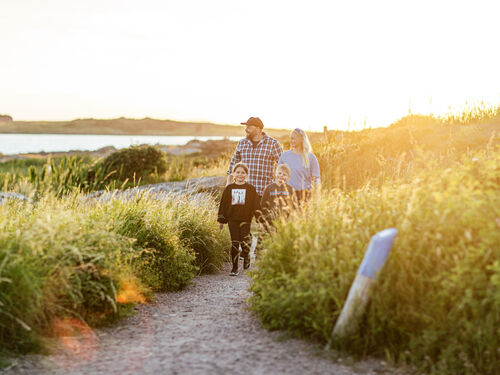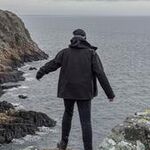Du använder en föråldrig webbläsare. Det får inte visa dessa eller andra webbplatser korrekt.
Du bör uppgradera eller använda en alternativ webbläsare .
Du bör uppgradera eller använda en alternativ webbläsare .
Ny bultning på Rebel Yell, Vårdberget?
- Trådstartare Mike C
- Start datum
Yep, såg det också sist jag var där. 7 bultar nu, 5 förut. Den var nog inte direkt mixad förut ty där fanns inte mycket säkringslägen, så jag gissar att den helt enkelt ansågs "farligt" bultad och därmed helt enkelt "kompletterats".
Både 7 och 5 bultar låter väl rätt mycket?
Action Direct har väl tre och ett potentiellt läge för en liten kil i början, eller minns jag fel?
(Bultarna i den är f ö av dålig typ.)
I och för sig behöver ju inte en glest bultad led rättfärdiga en annan glest bultad led - men sju bultar låter ju rätt mycket på 12(?) m.
Action Direct har väl tre och ett potentiellt läge för en liten kil i början, eller minns jag fel?
(Bultarna i den är f ö av dålig typ.)
I och för sig behöver ju inte en glest bultad led rättfärdiga en annan glest bultad led - men sju bultar låter ju rätt mycket på 12(?) m.
men sju bultar låter ju rätt mycket på 12(?) m.
If one applies the generic bolting rule to avoid a ground fall: 2.5 + 1 + 1.5 + 2 + 2 +2 = 11m.
So, 6 bolts should be enough for 12m.
But in reality, it all depends on the route. A ledge or any other larger sticking out structure, and the count should start all over: 2.5+1+1.5 ..., plus often an extra bolt comes just befor or just after the ledge "because it's easy to do the clip".
How was it with this Rebel Yell?
Ska man vara riktig petig så är längden på Rebel Yell angiven i föraren som 14 meter. Huvudväggen reser sig aningen högre åt vänster sett nerifrån.men sju bultar låter ju rätt mycket på 12(?) m.
Som Kim säger så ser det ut som om den fått kompletterande bultar. Visst, skulle man dragit ur en bult så kanske man kunnat sätta in två på bättre placeringar och på så sätt fått ner antalet bultar totalt, men här tycks man ha satt in två nya utan att ha dragit ut den första. Det kan se ut då som om den är lite väl tätbultad, men i det här fallet tycker jag att det ser helt ok ut.
If one applies the generic bolting rule to avoid a ground fall: 2.5 + 1 + 1.5 + 2 + 2 +2 = 11m.
So, 6 bolts should be enough for 12m.
But in reality, it all depends on the route. A ledge or any other larger sticking out structure, and the count should start all over: 2.5+1+1.5 ..., plus often an extra bolt comes just befor or just after the ledge "because it's easy to do the clip".
How was it with this Rebel Yell?
Det betyder att jag kan klippa första bulten från marken, mer eller mindre. Om landningen är OK (typ Vårdberget), och klättringen i sig gör att man står "bra" för ett klipp, så har jag ju inget emot att klättra åtminstone en meter innan första klippet. Jag är möjligen lite längre än många, men knappast djärvare skulle jag tro.
Rebel Yell har väl inte direkt hyllor.

Tänkte faktiskt byta bultarna på Action Directe nästa gång jag är vid Vårdberget, men jag hade inte tänkt "våga" ändra bultningen (placeringen alltså). (Bultarna är typ M8x30mm i handborrade hål.)
Jag tycker det låter som att Rebel Yell har blivit tätt bultad - men jag har ju inte sett den, och kan ju förstå att det "råkat" bli så om gamla bultarna är kvar. Upplever man det ändå vettigt när man klättrar så tycker jag i och för sig inte att gles bultning har ett egenvärde.
PS.Rebel Yell är väl s a a ungefär rakt över eldstaden på bilden.
Aktuellt
ANNONS
Upplev Halmstads kust: Vandra Prins Bertils stig
Leden som på 18 kilometer förenar stadspuls, rogivande natur och slående vyer över havet.
DUpplever man det ändå vettigt när man klättrar så tycker jag i och för sig inte att gles bultning har ett egenvärde.
Egenvärdet i gles bultning ligger i att man kan bli rädd och riskerar att skada sig ordentligt. En 14 meters, svinlätt led med 2 bultar är visserligen fortfarande bara en lätt 14 meters led, men den hjälper modiga, klättersvagare klättrare att överglänsa fegare och klätterstarkare klättrare. Och det har ett MYCKET stort egenvärde.
Det där förstod jag inte, men det kan ju bero på att jag är feg, fet och klen. Och lite trögfattad... 
Nja, jag tycker inte att man egentligen ska försöka påverka ledens karaktär genom bultningen. Bultningen ska vara sådan att den som klarar ledens grad med relativt liten marginal ska kunna klättra utan att riskera allvarliga skador. (På sätt och viss handlar det ju inte om klättrarens styrka - alla kan ju trilla och bultarna sitter ju där för att förhindra marfallspotential osv.)
Jag tycker dock att det kan vara rätt att man klättrar med ett viss extra fokus när man leder, för att undvika fall, som trots allt kanske kan leda till ett lite pirrigare fall än vid topprep. Hårddraget så tycker jag väl skrubbsår och blåmärken är helt OK. Jag inser samtidigt att man inte kan bulta med sådan precision att man precis väljer hur ont ett fall som värst ska kunna göra...
Edit: I föraren finns ju förresten tidigare kommentarer om bultningen, vilket kanske borde varit vägledande i någon mån vid ombultningen. Tilläggas bör dock att jag aldrig klättrat eller "spanat in" leden.
Nja, jag tycker inte att man egentligen ska försöka påverka ledens karaktär genom bultningen. Bultningen ska vara sådan att den som klarar ledens grad med relativt liten marginal ska kunna klättra utan att riskera allvarliga skador. (På sätt och viss handlar det ju inte om klättrarens styrka - alla kan ju trilla och bultarna sitter ju där för att förhindra marfallspotential osv.)
Jag tycker dock att det kan vara rätt att man klättrar med ett viss extra fokus när man leder, för att undvika fall, som trots allt kanske kan leda till ett lite pirrigare fall än vid topprep. Hårddraget så tycker jag väl skrubbsår och blåmärken är helt OK. Jag inser samtidigt att man inte kan bulta med sådan precision att man precis väljer hur ont ett fall som värst ska kunna göra...
Edit: I föraren finns ju förresten tidigare kommentarer om bultningen, vilket kanske borde varit vägledande i någon mån vid ombultningen. Tilläggas bör dock att jag aldrig klättrat eller "spanat in" leden.
Senast ändrad:
Egenvärdet i gles bultning ligger i att man kan bli rädd och riskerar att skada sig ordentligt. En 14 meters, svinlätt led med 2 bultar är visserligen fortfarande bara en lätt 14 meters led, men den hjälper modiga, klättersvagare klättrare att överglänsa fegare och klätterstarkare klättrare. Och det har ett MYCKET stort egenvärde.
Jag tycker dock att det kan vara rätt att man klättrar med ett viss extra fokus när man leder, för att undvika fall, som trots allt kanske kan leda till ett lite pirrigare fall än vid topprep. Hårddraget så tycker jag väl skrubbsår och blåmärken är helt OK. Jag inser samtidigt att man inte kan bulta med sådan precision att man precis väljer hur ont ett fall som värst ska kunna göra...
If one climbs sport routes, the bolts must not be considered as key points of the climb. And not focusing on bolts is an important part of training for sport climbing. Then, the safety and effort needed to do the clip are major factors. Sometimes they contradict each other
Moreover, sport climbing implies falling on all attempts but the last redpoint. If one doesn’t fall often, the routes are chosen incorrectly, and very little progress in climbing can be expected. So, bolts on sport routes are not pros placed just in case ( “trad climbers never fall”, or was it “ice climbers”?)
The true grey area are mixed routes. On rocks used mostly for sport climbing, they are either a waste of resources or a source of potential risks. Example: Atlantis in Skevik, 2 star 7a+ with a long runout. The reason for this runout is that one could place a friend or nut (ideally two) and the climbing on this part is much easier than the rest of the route. But have you seen many people bringing
friends to Skevik? Yet the route is climbed, not by everyone but often enough because it's really nice in the upper part. And usually it's climbed without any placements with a potential for a 15m ground fall, most probably a lethal one.
On the other hand, to trad climbing places (like Vårdberget and Grönbrink)
most people do bring there gear racks. So, mixed routes might make sense and are climbed often and properly.
My personal opinion is a bit of extreme.
On trad rocks, no bolts other than top anchors. No mixed routes. No new sport routes. Not enough protection, put a good top anchor and use top-rope.
On sport rocks, as many bolts as needed to make climbing safe and comfortable. No mixed routes. Occasional pure trad lines are ok and should not be bolted.
Läser man klätterförbundets bultpolicy http://klatterforbundet.se/skf_info.php?id=28&sid=110&subsida=2 så säger man tydligt:
• Borrbultar får endast placeras där naturliga säkringsmöjligheter saknas.
• Antalet fasta säkringar ska inte ändras på befintliga leder.
Visst blir man irriterad när man vet att 80% av de bultade lederna på hemmaklippan har så långt bultavstånd att jag aldrig kommer våga leda dem (ja, det blir i vissa fall markfall). Eftersom de bultades på 70-talet då bra borrmaskiner saknades så ville man inte bulta mer än nödvändigt.
Men jag försvarar fortfarande idén med att inte sätta i fler bultar. Bultar vi förmycket idag så kommer framtidens klättrare inte ha kvar några tradleder.
Klätterutrustningen blir hela tiden bättre. På 1930- talet hade man kängor idag har vi friktionsskor, 1978 uppfanns kamkilen och sen har Big Bro också kommit. Utvecklingen har inte avstannat utan pågår hela tiden. Om 15 år ser vi antagligen betydligt smartare säkringar och att då ha borrat sönder klipporna är fel. Precis på samma sätt som chipping. Bara för att jag inte kommer upp så har jag ingen rätt att förstöra för kommande generationer.
Jag skulle vilja höja statusen för topprepsklättring.
• Borrbultar får endast placeras där naturliga säkringsmöjligheter saknas.
• Antalet fasta säkringar ska inte ändras på befintliga leder.
Visst blir man irriterad när man vet att 80% av de bultade lederna på hemmaklippan har så långt bultavstånd att jag aldrig kommer våga leda dem (ja, det blir i vissa fall markfall). Eftersom de bultades på 70-talet då bra borrmaskiner saknades så ville man inte bulta mer än nödvändigt.
Men jag försvarar fortfarande idén med att inte sätta i fler bultar. Bultar vi förmycket idag så kommer framtidens klättrare inte ha kvar några tradleder.
Klätterutrustningen blir hela tiden bättre. På 1930- talet hade man kängor idag har vi friktionsskor, 1978 uppfanns kamkilen och sen har Big Bro också kommit. Utvecklingen har inte avstannat utan pågår hela tiden. Om 15 år ser vi antagligen betydligt smartare säkringar och att då ha borrat sönder klipporna är fel. Precis på samma sätt som chipping. Bara för att jag inte kommer upp så har jag ingen rätt att förstöra för kommande generationer.
Jag skulle vilja höja statusen för topprepsklättring.
Det finns ett slagord som jag i grunden ogillar; nåt i stil med:
"Sportklättring är bara glorifierad topprepsklättring"
Jag tycker det är en onödigt machotöntig formulering, men det finns naturligtvis en gräns för hur många bultar man kan sätta utan att leden i praktiken topprepas från varje bult.
"Sportklättring är bara glorifierad topprepsklättring"
Jag tycker det är en onödigt machotöntig formulering, men det finns naturligtvis en gräns för hur många bultar man kan sätta utan att leden i praktiken topprepas från varje bult.
Det finns ett slagord som jag i grunden ogillar; nåt i stil med:
"Sportklättring är bara glorifierad topprepsklättring"
Jag tycker det är en onödigt machotöntig formulering, men det finns naturligtvis en gräns för hur många bultar man kan sätta utan att leden i praktiken topprepas från varje bult.
Top-rope is just fine if it's not too steep. Climbing a long roof on top-rope is rather poor option.
At some places, you'd need to walk a kilometer to put up a top-rope.
Liknande trådar
- Svar
- 12
- Visningar
- 2 K
Dela:
Få Utsidans nyhetsbrev
- Redaktionens lästips
- Populära trådar
- Aktuella pristävlingar
- Direkt i din inkorg












